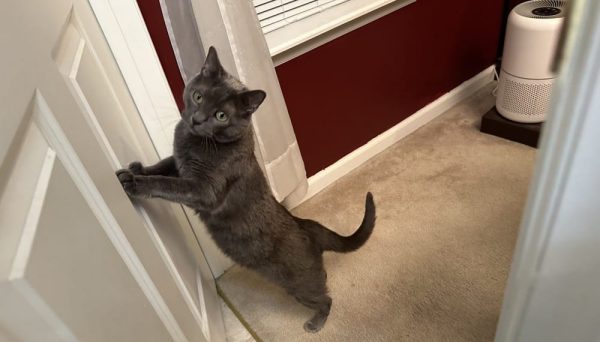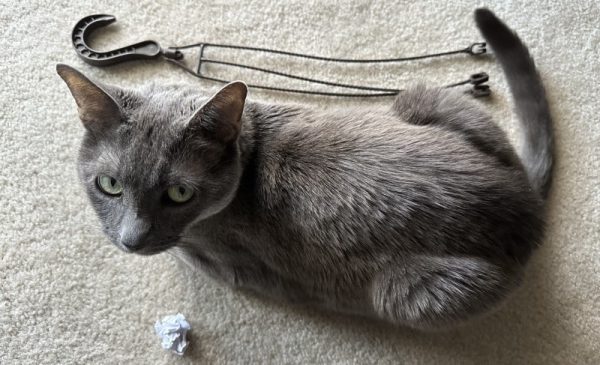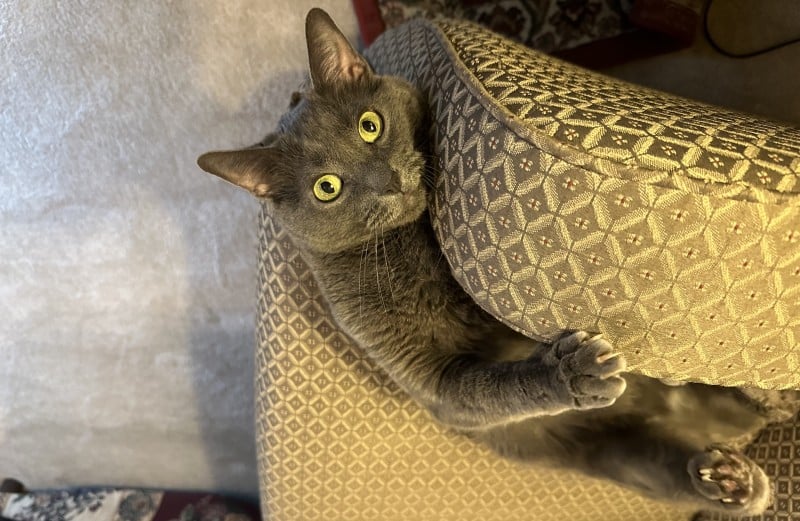Hi, I’m Christopher! Read my introduction to learn more about me and my silly Russian Blue cat, Olga.
After spending too much time viewing cat videos, you may be envious that your cat can’t play the piano, ride on top of a robotic vacuum, conduct an orchestra, or join you when you go hang gliding. Influencer felines have set a high bar, and it’s better to appreciate your pet’s unique traits rather than train them to best the top cats online. Although Olga isn’t a show cat or internet star, her odd behavior keeps me entertained and confirms that cats benefit their owners’ mental health.

Misbehaving for Attention
Cat owners understand that bored felines can be destructive, and Olga usually takes out her aggression on my blinds, doors, and antique furniture when she wants attention. She doesn’t dive into the blinds as often anymore, but she’ll sit on the windowsill and use her head to knock the blinds, which are pulled up halfway so she can see outside, into the window when I ignore her.
When Olga wants to make a bold statement about being neglected, she’ll slam the bedroom door. She wiggles between the door and the wall to open it slightly, gets on her hind legs, and pushes forward with her front paws. She can open it by grabbing the door handle and pulling it back, but sometimes, she gets frustrated and whines for help.
If she wants to play when I’m using my ancient fold-out desk, she’ll paw the brass drawer handles or lick the varnish. I push her away when she licks the wood; she’s never done it compulsively, but she’ll lick the headboard of my bed if I sleep too late. It’s louder than you would think and sounds like someone is trying to disassemble the bed.
She also likes to climb around her favorite chair like a jungle cat when I enter the room. It signals that she wants me to throw a paper ball for her to play with or chase the three-pronged plant holder toy.

Leading the Way
One of her unusual habits that has nothing to do with boredom is leading the way to her food bowl. After I wake up, she ensures that my priority is walking to the kitchen to fill her bowl. She walks in front of me slowly and whines if I veer off the path to hit the light switch or grab the TV remote. If I walk in front of her and move away from the kitchen, she hits me on the back of the leg.

Sleeping in Unusual Positions
Like every cat, Olga has a preferred position to sleep, but although she’s intelligent, she is unaware of gravity. She’s always on the verge of falling when she curls up in my lap or on the edge of a chair. She likes to live (sleep) dangerously and picks the edge of the bed or chair instead of the middle. Fortunately, she doesn’t fall very often, but even if she did, I don’t think it would convince her to adopt a safer sleeping position.






